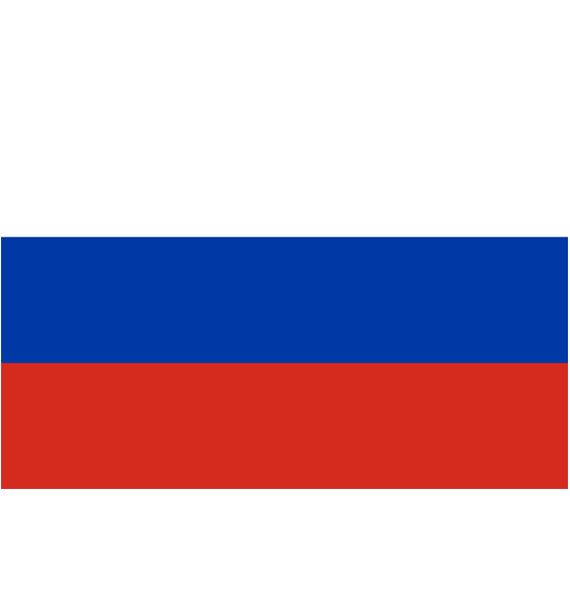
E.V. Bogatyrev1, R.G. Galeev2, V.E. Ivanov3, S.I. Kudinov4, V.Ya. Noskov5, O.A. Chernykh6
1,2 JSC «NPP «Radiosvyaz» (Krasnoyarsk, Russia)
1 Siberian federal university (Krasnoyarsk, Russia)
2 SIBGU named after M.F. Reshetnev (Krasnoyarsk, Russia)
3–6 Ural Federal University (Yekaterinburg, Russia)
1,2 info@krtz.su, 3 v.e.ivanovekt@gmail.com, 4 kudinoffs@mail.ru, 5 v.y.noskov@urfu.ru, 6 r303las@mail.ru
The essence of the well-known method of asynchronous reception and processing of the request signal used in the operation of an autodyne transceiver (AT) consists in converting the frequency of the request radio pulse of the radar on board the ARS by means of an autodyne microwave oscillator and its subsequent processing for the simplest identification and formation of a response pause. In this case, the frequency of the radar transmitter forming the request radio pulse is pre-tuned from the frequency of the autodyne microwave oscillator by an amount greater than the half-width of the synchronization band of the microwave oscillator.
However, the method of asynchronous reception and processing of the request signal has disadvantages, the combination of which poses a problem for the further development of atmospheric radiosonding systems. This problem consists in the need to simultaneously solve a number of heterogeneous tasks, namely: expanding the operating range of the range to the area of small distances (from tens to about hundreds of meters) of the atmospheric radiosonding system, narrowing the operating frequency band occupied by the radiosonding system and expanding the dynamic range in terms of the request signal level.
The solution to this problem is to use the properties of radio signals transmitted from the radar of the atmospheric radiosonding system to the ARS, and the operating modes of the AT. The essence of this solution is to use vibrations with periodic intra-pulse frequency modulation as the carrier of the request radio pulse and to transfer the microwave oscillator from the mode of an asynchronous autodyne frequency converter to the mode of a synchronous frequency modulation detector (converter).
The request signal in the form of a radio pulse by an autodyne microwave oscillator is converted into a radio pulse filled with fluctuations in the frequency of FM radiation, while its amplitude at a constant frequency deviation is directly proportional to the amplitude of the signal of the request microwave radio pulse. It should be noted that the frequency deviation value is selected at the minimum level of the request signal, which corresponds to the maximum range from the radar to the ARS. This ensures the stability of the AT operation over the entire range of ranges from tens of meters to a range limited by the energy potential of the system and the terrain.
After amplification in the amplifier, this radio pulse is selected by frequency with a bandpass filter, then detected by an amplitude detector, receiving video pulses, and, if the threshold level of the comparator is exceeded, the received pulses from the comparator output are sent to the input of the time selector of the request pulses. The time pulse selector, when the duration and repetition period of the received pulses correspond to the time parameters of the radar request signals, generates an impulse that enters the input of the response pause pulse generator.
The response pause pulse oscillator produces a short-term (about 1 ... 2 microseconds) interruption of the operation of the microwave oscillator and, accordingly, the transmission of electromagnetic oscillations from the microwave oscillator to the antenna. This interruption is achieved in the simplest case by electronically disconnecting the power supply of the microwave oscillator.
In accordance with the laid-down principle of radar operation, according to the temporary position of the pause received by the radar receiver relative to the moment of sending the request radio pulse, the inclined range to the ARS is measured, which is necessary along with angular coordinates to determine the current coordinates of the radiosonde location. At the same time, the time delay introduced by the proposed device, associated with the reception, processing and formation of a response pause, is easily taken into account when calibrating the radar.
Another problem that the second method is aimed at solving is the need to increase the noise immunity of the AT to the effects of active interference and prevent unauthorized access to obtaining meteorological data.
The essence of the proposed method is based on the use of additional subcarrier modulation of a frequency-modulated radar request signal with a unique code and subsequent reception, subcarrier demodulation and decoding of this signal. These are provided in the AT with the possibility of correct identification of radar request signals, the formation of a response pause, increased security to the effects of active interference and unauthorized access to ARS weather data.
The use of this method ensures, while maintaining the functionality of known transponders, an increase in the stability of the mode and reliability of the operation of an autodyne microwave oscillator over a wide range of distances, from the launch site of the ARS to its range limit, limited by the energy potential of the system and the terrain. In addition, the expansion of the dynamic range in terms of the request signal level and the solution of the problem of electromagnetic compatibility with other systems is achieved. The ability to encode request radio signals contributes to improving the security of the ARS AT from the effects of chaotic pulse interference and unauthorized access, which is also the advantage of the proposed methods.
It should be noted that the introduction of the proposed methods and devices into existing radiosonding systems will require only minor design changes in the radar associated with the introduction of a frequency detector into the receiver of the range channel and a subcarrier modulator for its encoding.
The results of the performed studies of the transistor AT at a frequency of 1680 MHz confirmed the feasibility of the proposed method and its suitability for use in the prospective development of an atmospheric radiosonding system.
Taking into account the wide need for ARS on the network of radar sensing of the atmosphere, the proposed AT can be implemented in an integrated design with digital processing and signal generation. At the same time, some complication of the design of the AT will not cause significant energy consumption of the on-board power supply and will not lead to an increase in the dimensions and weight of the ARS.
Bogatyrev E.V., Galeev R.G., Ivanov V.E., Kudinov S.I., Noskov V.Ya., Chernykh O.A. Radar sensing of the atmosphere using synchronous autodyne transponders. Achievements of modern radioelectronics. 2024. V. 78. № 1. P. 32–44. DOI: https://doi.org/ 10.18127/j20700784-202401-04 [in Russian]
- Smirnov G.D., Gorbachev V.P. Radiolokatsionnye sistemy s aktivnym otvetom. M.: Voenizdat. 1962. [in Russian]
- Khakhalin V.S. Sovremennye radiozondy. M.: Gosenergoizdat. 1959. [in Russian]
- A.s. SU115078. Peredatchik-otvetchik dlya radiozonda. Khakhalin V.S., Vasil'ev B.V., Kalachinskiy S.F. Opubl. 01.01.1958. [in Russian]
- Ivanov V.E., Fridzon M.B., Essyak S.P. Radiozondirovanie atmosfery: Tekhnicheskie i metrologicheskie aspekty razrabotki i primeneniya radiozondovykh izmeritel'nykh sredstv. Pod red. V.E. Ivanova. Ekaterinburg: UrO RAN. 2004. URL: http://hdl.handle.net/10995/122177
- Ivanov V.E., Gusev A.V., Ignatkov K.A. i dr. Sovremennoe sostoyanie i perspektivy razvitiya sistem radiozondirovaniya atmosfery v Rossii. Uspekhi sovremennoy radioelektroniki. 2015. № 9. S. 3–49. [in Russian]
- Noskov V.Ya., Ivanov V.E., Ignatkov K.A., Kudinov S.I. Teoreticheskie obosnovaniya avtodinnogo metoda formirovaniya otvetnogo signala radiozonda po dal'nosti. 22-ya Mezhdunar. Krymskaya konf. «SVCh-tekhnika i telekommunikatsionnye tekhnologii» (KryMiKo’2012). Sevastopol'. 2012. S. 897–899. [in Russian]
- Kudinov S.I., Ivanov V.E., Noskov V.Ya., Ignatkov K.A. Eksperimental'nye issledovaniya avtodinnogo rezhima priemoperedayushchego ustroystva radiozonda MRZ-3MK. 22-ya Mezhdunar. Krymskaya konf. «SVCh-tekhnika i telekommunikatsionnye tekhnologii» (KryMiKo’2012). Sevastopol'. 2012. S. 900–902. [in Russian]
- Patent RU2624993C1. Avtodinnyy priemoperedatchik sistemy radiozondirovaniya atmosfery. Noskov V.Ya., Ivanov V.E., Ignatkov K.A., Kudinov S.I., Gusev A.V. Opubl. 11.07.2017. Byul. 20. [in Russian]
- Noskov V.Ya., Ivanov V.E., Ignatkov K.A., Kudinov S.I., Gusev A.V. Avtodinnyy priemootvetchik sistemy radiozondirovaniya atmosfery. IV Vseross. nauch.-tekhnich. konf. «Sistemy svyazi i radionavigatsii». Krasnoyarsk. 2017. S. 201–204. [in Russian]
- Dem'yanchenko A.G. Sinkhronizatsiya generatorov garmonicheskikh kolebaniy. M.: Energiya. 1976. [in Russian]
- Noskov V.Ya., Ivanov V.E., Gusev A.V. i dr. Primenenie avtodinov v perspektivnykh sistemakh radiolokatsionnogo zondirovaniya
atmosfery. Ural Radio Engineering Journal. 2022. T. 6. № 1. S. 11–53. DOI: 10.15826/urej.2022.6.1.001. [in Russian] - Poluprovodnikovye pribory v skhemakh SVCh. Pod red. M. Khausa, D. Morgana. M.: Mir. 1979. [in Russian]
- Kurokava K. Prinuditel'naya sinkhronizatsiya tverdotel'nykh SVCh-generatorov. TIIER. 1973. T. 61. № 10. S. 12–40. [in Russian]
- Minaev M.I. Nizkochastotnyy spektr avtodinnogo preobrazovatelya chastoty. Elektronnaya tekhnika. Ser. Elektronika SVCh. 1989. № 7. S. 12–14. [in Russian]
- Patent RU2786729S1. Sposob i ustroystvo sinkhronnogo priema i obrabotki zaprosnogo signala v avtodinnom priemoperedatchike sistemy radiozondirovaniya atmosfery. Noskov V.Ya., Galeev R.G., Bogatyrev E.V., Ivanov V.E., Chernykh O.A. Opubl. 26.12.2022. Byul. 36. [in Russian]
- Radiotekhnicheskie ustroystva SVCh na sinkhronizirovannykh generatorakh. Pod red. N.N. Fomina. M.: Radio i svyaz'. 1991. [in Russian]
- Noskov V.Ya., Smol'skiy S.M., Ignatkov K.A., Mishin D.Ya., Chupakhin A.P. Sovremennye gibridno-integral'nye avtodinnye generatory mikrovolnovogo i millimetrovogo diapazonov i ikh primenenie. Chast' 11. Osnovy realizatsii avtodinov. Uspekhi sovremennoy radioelektroniki. 2019. № 2. S. 5–33. [in Russian]
- Zashchita ot radiopomekh. Pod red. M.V. Maksimova. M.: Sov. radio. 1976. [in Russian]
- Kupriyanov A.I., Sakharov A.V. Teoreticheskie osnovy radioelektronnoy bor'by. M.: Vuzovskaya kniga. 2007. [in Russian]
- Patent RU2789416C1. Sposob sinkhronnogo priema i obrabotki zaprosnogo signala v avtodinnom priemoperedatchike sistemy radiozondirovaniya atmosfery. Noskov V.Ya., Galeev R.G., Bogatyrev E.V., Ivanov V.E., Chernykh O.A. Opubl. 02.02.2023. Byul. 4. [in Russian]
- Gonorovskiy I.S. Chastotnaya modulyatsiya i ee primeneniya. M.: Svyaz'izdat. 1948. [in Russian]
- Galkin V.A. Tsifrovaya mobil'naya radiosvyaz'. M.: Goryachaya liniya – Telekom. 2007. [in Russian]


